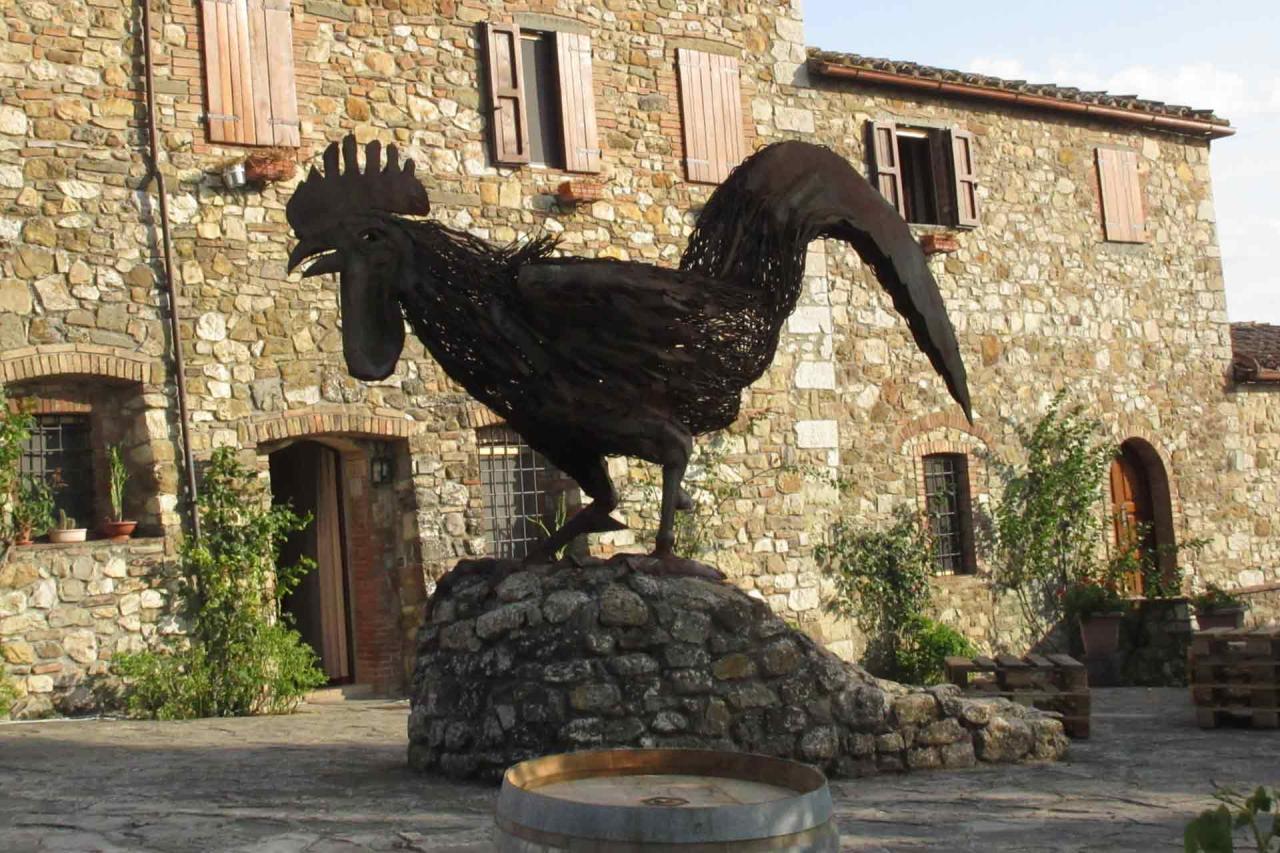It has been produced for centuries in an area that extends between the provinces of Florence and Siena, with Sangiovese grapes, in percentages that can vary depending on the denominations. Other grapes allowed are the reds Canaiolo, Colorino, Cabernet Sauvignon, and Merlot, and the whites Malvasia and Trebbiano Toscano.
Chianti Classico, traditionally produced in the historic area, is symbolized by a Black Rooster which can be found on the neck of the bottle. This image has a very ancient origin: it was used by the Lega del Chianti, a political-military institution created by the Republic of Florence to control the area.
The most classic Chianti food pairing is with red meats, but this is a very versatile wine. Here we will take a look at its main characteristics and understand what pairs with Chianti.
Chianti food pairing: the basics
The characteristics of Chianti derive from the typicality of Sangiovese, which in Tuscany creates unique wines.
The nose opens with floral and fruity aromas, dominated by notes of violet, blackberry, and cherry. The versions aged in wood also release spicy hints of cinnamon and vanilla, tobacco, and cocoa.
On the palate, it is dry and savory, with a marked acidity and rich in tannins. The flavor recalls the acid and sweet balance typical of black and red berried fruits. The dry consistency of the younger versions becomes velvety in the more aged wines. The acidity softens and the tannins become silkier with age.
The best Chianti food pairings include the most traditional Tuscan and Italian recipes, ranging from appetizers to pizza, from blue fish to pasta with meat sauce, and from ribollita to stew of wild boar, depending on the maturity of the wine.
Get updates on the latest posts and more from Wine Bugle straight to your inbox.
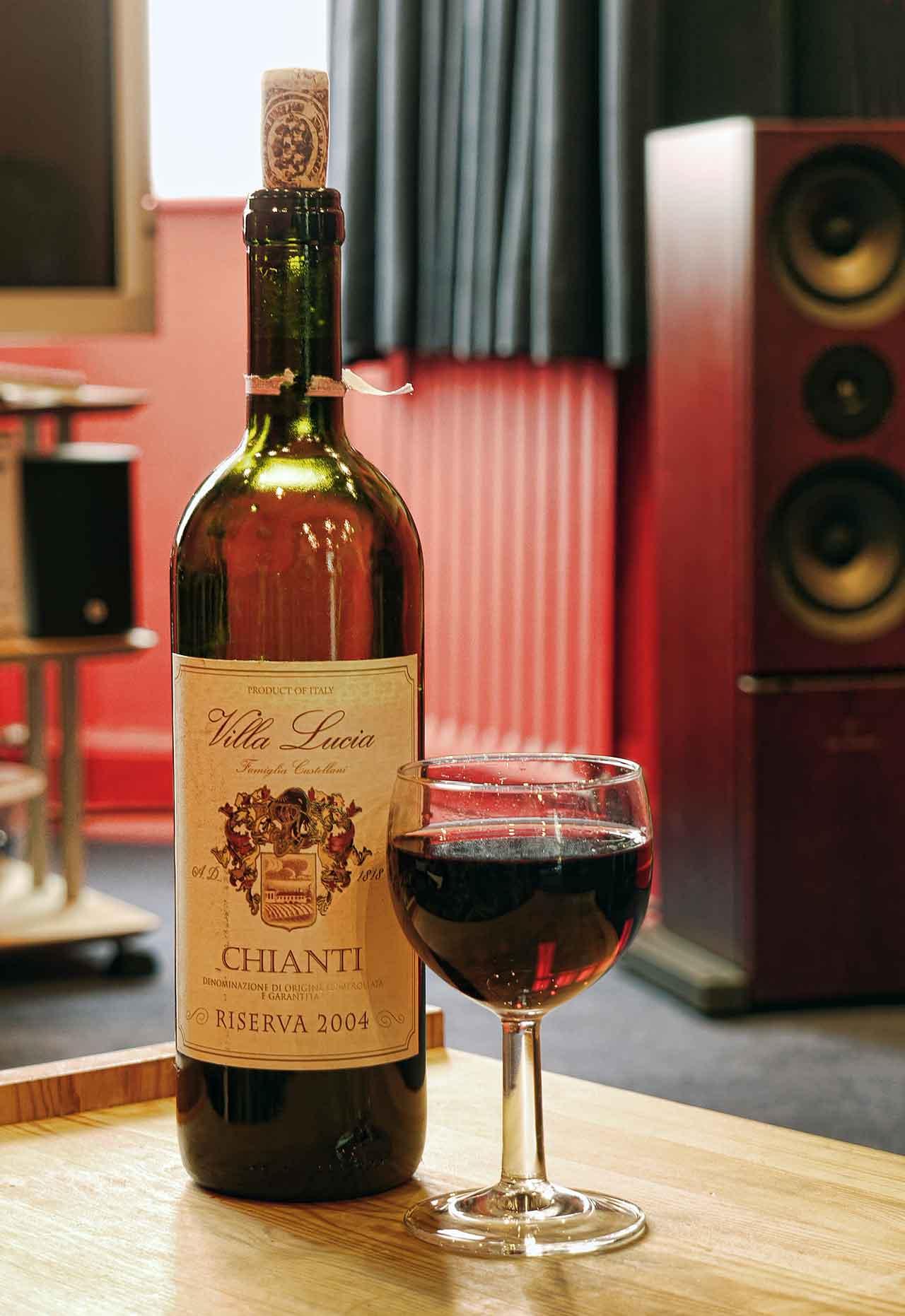
Chianti aging classification
Young Chianti
Young Chianti is a fresh, lean, and easy-drinking wine, with lively acidity typical of Sangiovese, and an intense olfactory profile with captivating fruity-floral notes of cherry and violet. It goes well with first courses of meat sauce, pizza and vegetarian recipes, medium-aged cheeses, and many spicy recipes.
Chianti Supeiore
The Superiore denomination applies to Chianti not coming from the Classico area, which is produced according to a more rigid disciplinary than that of the basic wine and is aged for nine months, three of which are in the bottle. The result is a fruity and soft wine, with evolved tannins.
Chianti Classico Riserva
The Chianti Classico Riserva is a more structured and fragrant wine, which, thanks to aging in wood, shows less sharp tannins and acidity, and is, therefore, more elegant, velvety, and harmonious. The quintessential Chianti Classico food pairing is with Florentine steak.
Chianti Gran Selezione
The Gran Selezione is voluminous, and elegant. Its tannins are enveloping and silky. Its aromas range from ripe wild berries notes to dried fruit, with elegant tertiary notes of vanilla, leather, tobacco, and ethereal nuances coming from the prolonged aging in wood. It goes well with game dishes, such as polenta with wild boar sauce, braised meats, and tasty stews.
What is Chianti Classico?
Chianti is labeled as Classico when it's produced in the area defined as historic, originally delimited by Cosimo III Medici in 1700 and then recognized by a ministerial decree in 1932. This is considered the best place to grow vines to produce Chianti.
Chianti and tomato based dishes
With its lively acidity, Chianti manages to give the right balance to all tomato sauces, starting from the classic ragù, passing through Roman sauces such as Amatriciana up to the simple tomato and basil.
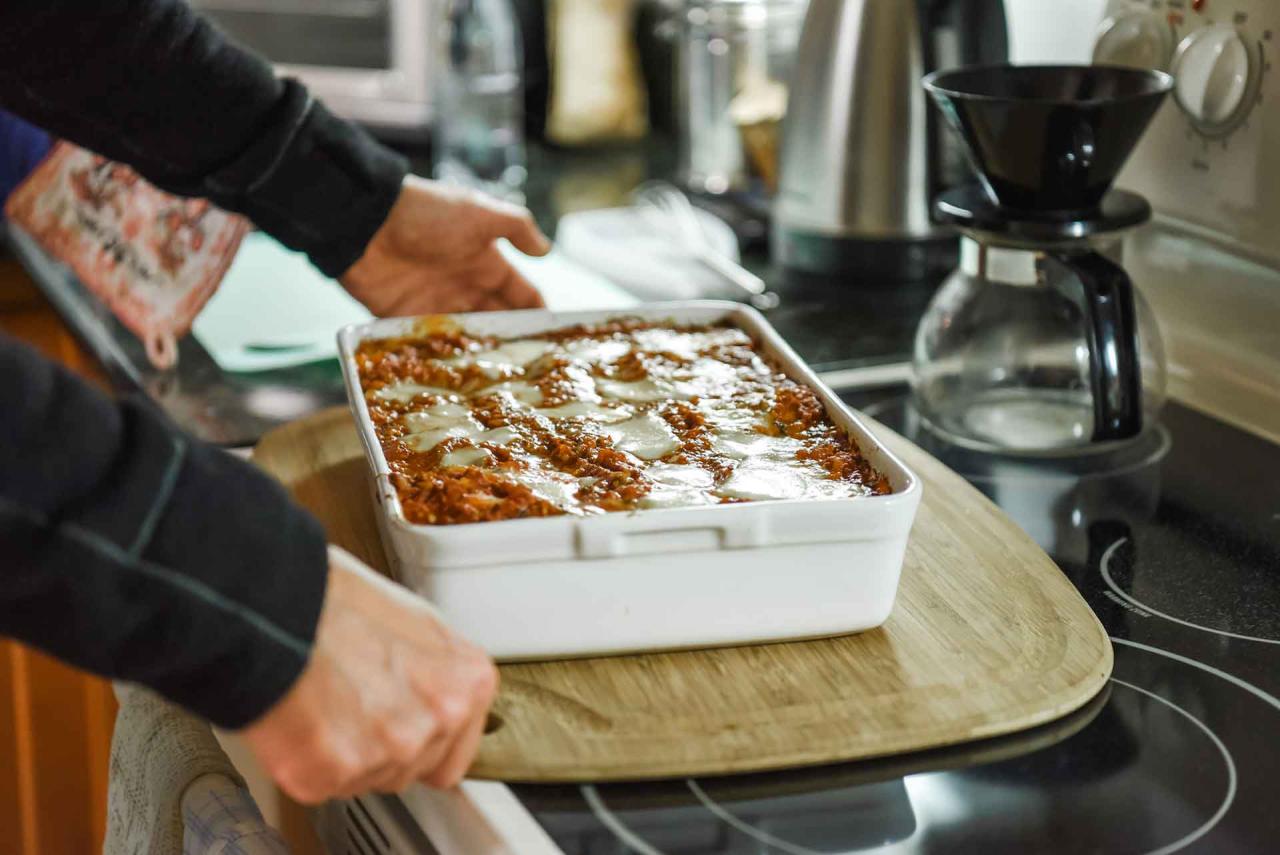
Lasagne
Lasagna Bolognese is a rich and succulent first course, characterized exquisite greasiness and fatness, due to the rich dressing, and a slight acid tendency.
Alongside such a tasty and full-bodied first course, you need a savory red wine with a good dose of freshness. An elegant young Chianti Classico with its lively acidity, well-blended tannins, and its full and persistent structure, is the perfect companion for Lasagna.
Our suggestion: Chianti Classico DOCG "Famiglia Zingarelli", Rocca delle Macìe
Pasta
Pasta al ragu’ is a classic Italian first course. The sauce can be made with various types of meat: hare, duck, wild boar, or with a mixture of pork and beef. The intensity of flavors and the fatness of the dish will depend on the type of meat used, but the pasta with its slight sweetness has a mitigating effect on the overall richness of the dish.
A relatively young Chianti Classico, with its good acidity and soft mouthfeel, can cleanse the palate and balance the delicious flavors of tagliatelle Bolognese or the typical Tuscan pappardelle with hare.
Our suggestion: Chianti Classico Rubiolo Gagliole
Bruschetta
Bruschetta is a poor and simple dish that has become the essential starter for lunches and dinners, especially during the summer. The ingredients are very few: bread, oil, and garlic. To these, tomatoes and some aromatic herbs are often added, such as basil or oregano.
For the most delicious Chianti wine food pairing, choose a fresh and easy-to-drink wine with fruity and floral aromas and lively freshness.
Our suggestion: Chianti DOCG “Castiglioni”, Frescobaldi
Pizza
Wanna know what does Chianti pair with deliciously?
Well, there you go: Pizza and Chianti Classico pairing is an absolute must-try!
The fresh tomato sauce flavored with oregano and garlic will find the perfect partner in the floral intensity of Chianti. While the tannins, softness, and acidity of a wine from the Classico area will accompany condiments such as salami, ham, mushrooms, and cheeses.
Our suggestion: Chianti Classico DOCG "Ser Gardo", Tenuta I Colli, Bindi Sergardi
Chianti and meat pairings
Don’t miss the opportunity to have a glass of Chianti with grilled meat. Of all the possible Chianti wine food pairings, the one with meat is the most delicious.
The tannins of the wine and its concentrated structure will enhance the texture of the meat and enhance its flavor.
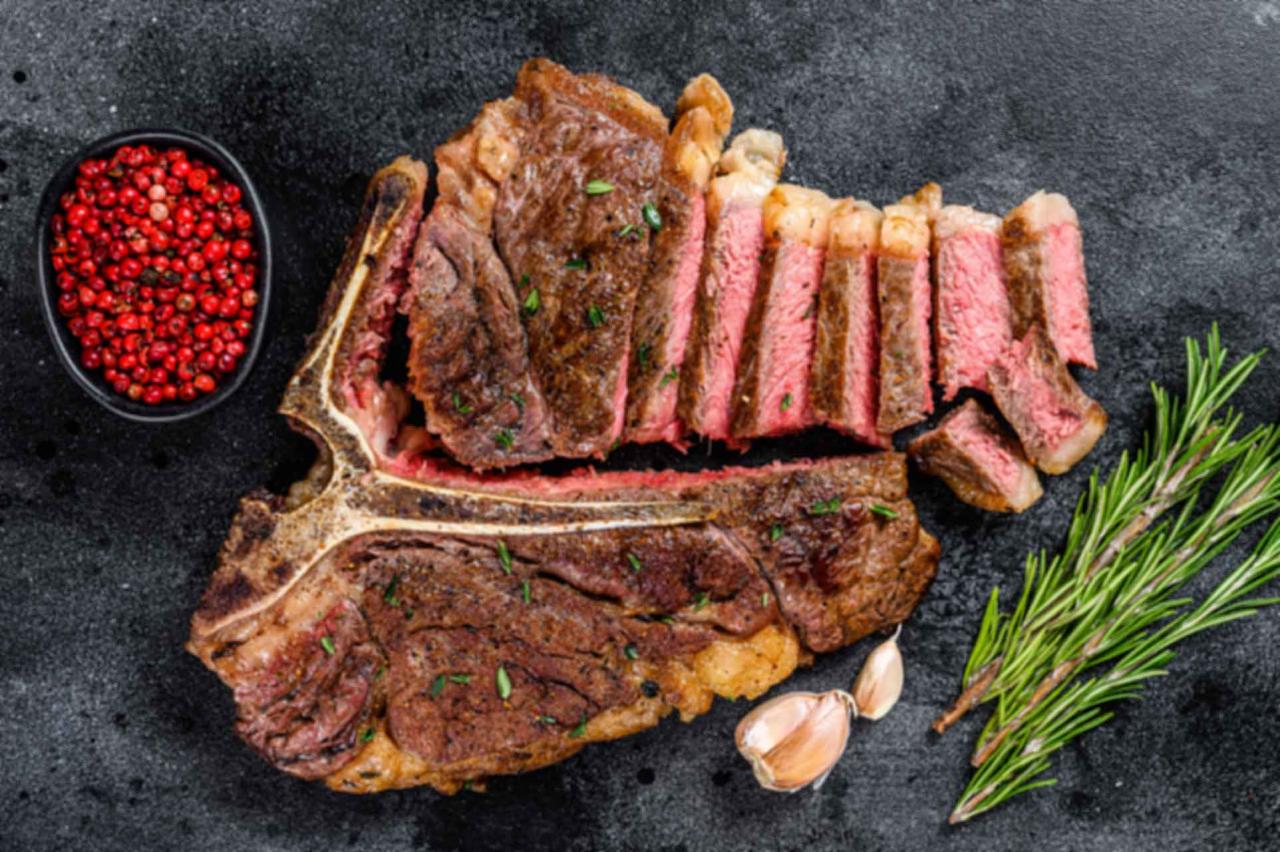
Bistecca alla Fiorentina
The Florentine steak needs to be paired with a full-bodied and structured red wine able to best accompany this classic of Tuscan cuisine. The first option is the territorial one with Chianti Classico. The hints of red fruit, spices, and that typical balsamic appeal of Chianti go wonderfully with grilled steak.
Just pick a medium-aged wine that is mature and structured enough for the meat.
Our suggestion: Chianti Classico Riserva DOCG "Il Grigio", San Felice
Wild boar and game in general
The complex and decisive flavors of wild boar need a concentrated wine with strong tannins and a deep aromatic profile like a Chianti Classico Gran Selezione.
The distinctive concentration and maturity of these wines will create a perfect match with braised or stewed game, cleansing the palate and balancing the flavors. Just pick a medium-aged wine that is mature and structured enough for this kind of meat.
Our suggestion: Chianti Classico Gran Selezione DOCG "Vicoregio 36", Mazzei, Castello di Fonterutoli
Burgers
A burger is a simple and appetizing dish that goes very well with a consistent red wine with a harmonious character that enhances the succulent notes of the meat without overpowering them.
The possible combinations may vary according to the type of meat, sauces, and other accompanying ingredients (onions, salad, cheese, tomato, bacon ...), but generally, the perfect choice is a light and fragrant Chianti, which, with its soft tannins, will bind to the juiciness of grilled meat.
Our suggestion: Chianti Classico DOCG “Brolio”, Barone Ricasoli
Chianti cheese pairing
Chianti pairs well with many types of cheese, according to the aging of the wine. Younger wines can pair well with medium-aged cheeses such as Cantal or Grana Padano. Riserva wines, on the other hand, will require a mature and more intense cheese, such as Parmigiano Reggiano or Pecorino Toscano.
The latter is indeed the most classic cheese pairing with Chianti: the velvety, dry and savory flavor of the wine will give the right balance in the mouth, enhancing the cheese aroma and pungency.
Our suggestion: Chianti Classico Riserva DOCG, Banfi
Appetizers to pair with Chianti
Chianti, especially if young, can be a delicious aperitif in combination with a series of typical Italian appetizers, such as crostini with paté, a charcuterie board, and finger foods such as truffle rice balls or mini burgers.
Choose the elegance of a wine from the Classico area, and serve it at 16/18° C to enhance its softness and aromas.
Our suggestion: Chianti Classico DOCG, Istine
Vegetarian dishes
Thanks to its floral and undergrowth aromas, together with its lively acidity, Chianti may be a great partner for rich and hearty vegetarian dishes such as pulses and cereals soups or succulent recipes including tomatoes or mushrooms.
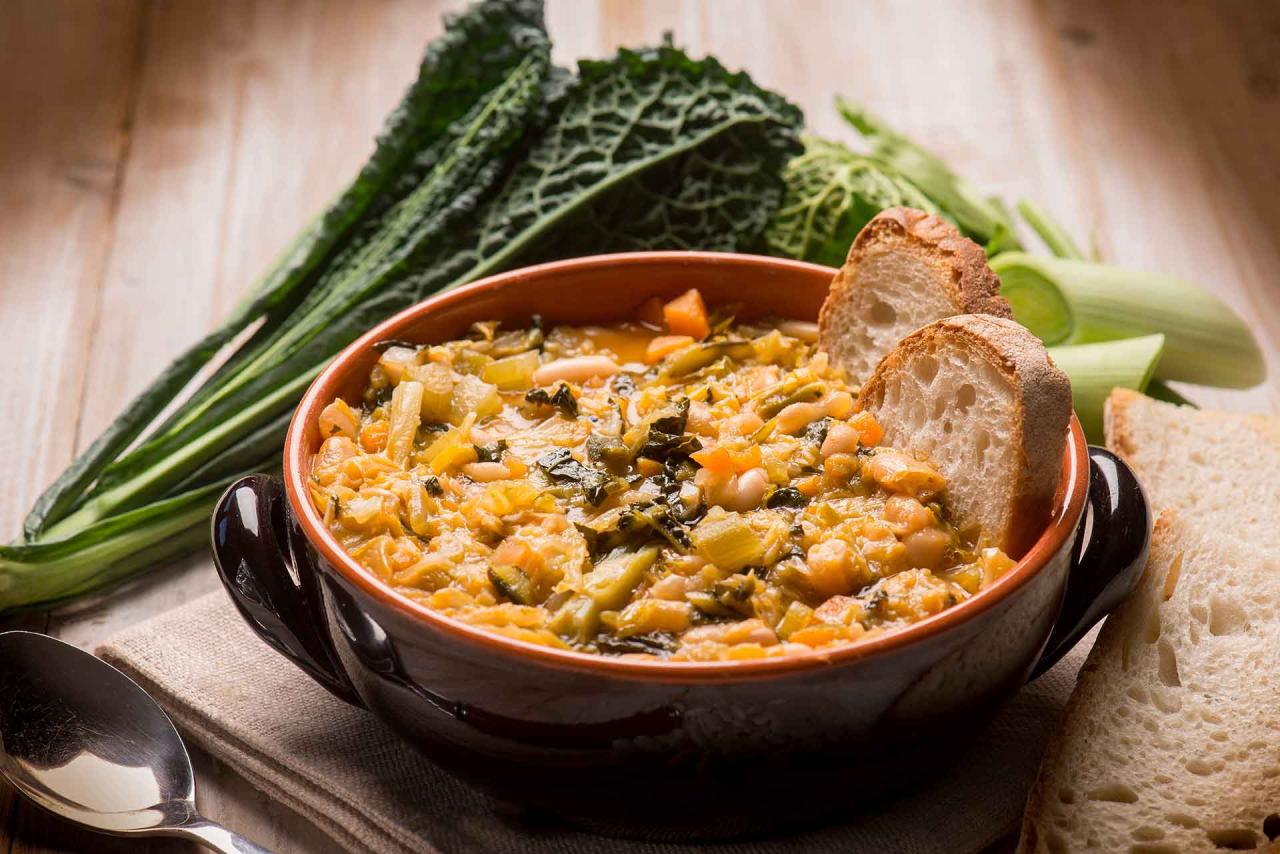
Ribollita
Ribollita is a poor dish typical of the popular Tuscan peasant tradition. The original recipe wants this tasty soup to be prepared with the leftovers of cannellini beans and vegetables of the week, including black and savoy cabbage, with the contribution of potatoes, tomato, the inevitable extra virgin olive oil, and stale bread.
Choose a relatively young wine for countering the sweet notes of the soup and create a rustic food pairing with Chianti.
Our suggestion: Chianti DOCG Edizione "Tempo", Salcheto
Conclusions
Today we have learned that Chianti is a foodie and that stopping at the classic Chianti food pairing with red meats is quite limiting.
There is much more to taste and enjoy! So...open a bottle and try one of the many delicious Chianti food pairings!
Chianti Black Rooster photo by Nigel Hoult
Chianti Riserva photo by Brett Jordan

